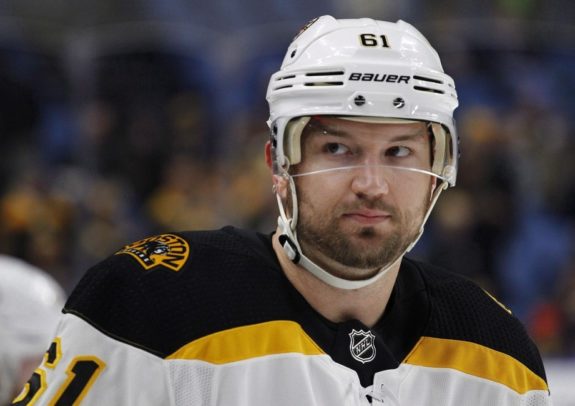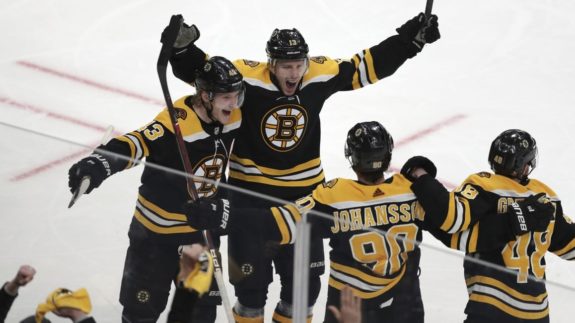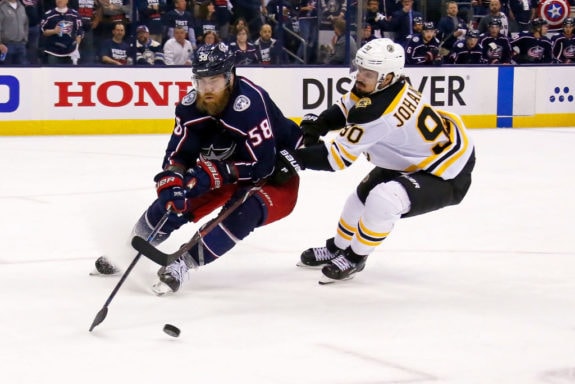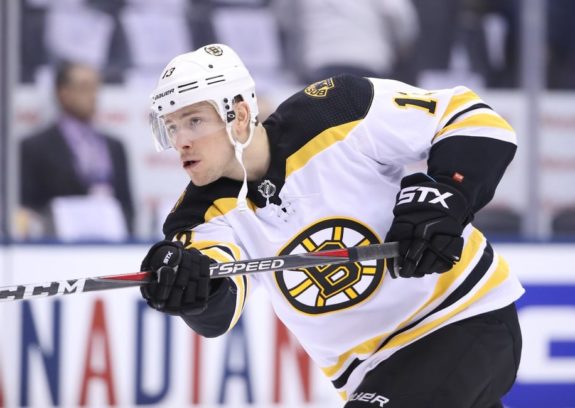When the NHL Trade Deadline rolls around each year, the same questions consistently float around. Which teams are buyers? Who are the sellers? Which teams are in the hunt and will have to decide on their own internal rental options?
The biggest question, though, comes down to whether or not a trade will actually turn a team from a competitor into a legitimate contender.
This is a fair question as time and time again, teams have mortgaged their future for an addition with no guarantee they’ll even provide an impact. In fact, more often than not, the biggest deadline additions don’t tend to lead to success.
The Columbus Blue Jackets, who emptied the well to acquire Matt Duchene and Ryan Dzingel from the Ottawa Seantors, along with others at the trade deadline, are left with very little to show for it now that all is said and done.
It’s led to some hesitance for certain general managers who have been snake-bitten in the past, but it hasn’t stopped the trend of rentals being added for a major price as teams look to shore up their postseason roster.
Bruins 2018 Trade Deadline Additions Didn’t Pay Dividends
Just last season the Bruins went out and swung for the fences when they traded away Ryan Spooner, Ryan Lindgren, Matt Beleskey, a first-round pick and a seventh-round pick in 2019 for Rick Nash. In this deal, the Bruins also retained 50% of Beleskey’s salary and used this transaction as a tool to get out of half of that deal while also acquiring a big piece in Nash.
Unfortunately, Nash would score only three goals and five points through 12 games and the Bruins would fall in five games to the Lightning before ultimately retiring from hockey due to lingering concussion symptoms.

Nash added an extra layer to the Bruins second line alongside David Krejci and Jake DeBrusk when healthy, but he wasn’t able to put them over the hump when it came to Stanley Cup contention. It was a hefty price to pay to simply move on from half of Beleskey’s contract.
The Bruins would also ship a third-round pick to the New York Rangers in exchange for Nick Holden who served as an extra-defender for the team’s playoff run, playing in two games, one in each round.
When looking through the history of the trade deadline, there are certainly some moves that stand out as successful additions for better or worse. More often than not, these moves aren’t typically rentals but turn into long-term marriages between player and team. Some are pure rentals, though, and that’s fine given either their contribution to the acquiring team or the team winning a Stanley Cup as a result of (or in spite of) this move.
General Manager Don Sweeney was reluctant to move a first-round pick at the 2019 Trade Deadline as a result, but he was still one of the major players at the deadline all the same.
Johansson and Coyle Looks Underwhelming at First
At the time that the Bruins went out and acquiring Charlie Coyle and Marcus Johansson at the trade deadline this season, they sent out a fairly hefty sum in Ryan Donato, one of the best young players in the team’s system, a second-round pick and conditional fourth-round pick in 2019 and a fourth-round pick in 2020. While the team didn’t move on from a first-round pick and did admittedly get Coyle with an extra year remaining on his deal, many felt underwhelmed by the Bruins Deadline decisions.
For one, the Bruins didn’t get a huge impact player that many were expecting akin to Artemi Panarin, Matt Duchene or others who carried superstar status. On the other hand, they did trade away some valuable assets to make moves that didn’t appear to move the needle.

Still, the Bruins did address their biggest needs of a 200-foot center and a top-six winger. Even if Coyle wasn’t going to provide the offensive boost the Bruins needed, he was a definite upgrade on Donato from a two-way forward standpoint. The Bruins definitely needed more than just Coyle though, and that’s where Johansson fit into the puzzle.
For Johansson, the concerns were obvious. A left-shot winger who only eclipsed 20-goals in his career twice and 50-points once while also having a history of injuries courtesy of his new teammate in Brad Marchand, something No. 63 would apologize for after Johansson was acquired. Because of his left-shot and his inability to gel with David Krejci early on, Johansson was tasked with playing on a bevy of different lines with multiple different players.
This showed on the scoresheet as well as he’d score only one goal and three points in 10 regular season games as well as no points in his first five postseason games as a Bruin.
Bruins 2019 Trade Deadline Additions Proving Worth the Risk
When finally given some consistency alongside Coyle and Danton Heinen, a line that only played together for 9:49 of five-on-five time prior to the postseason, Johansson really started to find his game. Following Game 2 of the Eastern Conference Finals, Johansson now has three goals and nine points in his last eight playoff games and, along with Coyle, is finally giving the Bruins depth scoring that they’ve been missing all season long.

Coyle has contributed six goals (tied for first with David Pastrnak) and 12 points in 15 playoff games, ranking him second on the team (Johansson ranks seventh on the Bruins, for reference) this postseason.
Outside of the point production, though, Coyle has given the Bruins a layer that they missed all season long. While the Bruins were unable to consistently run four lines in the past, Coyle’s addition has helped anchor the third-line and give the Bruins a plethora of opportunity they weren’t previously afforded.
It’s rare to see trade deadline additions play such a crucial role in the postseason but without Coyle and Johansson, the Bruins would likely be nowhere close to two wins away from the Stanley Cup Final.
This wouldn’t be the first time the Bruins would be looking at a run at the Stanley Cup thanks to some key deadline additions, either.
Bruins Repeating 2011 Success
The last time the Bruins made significant moves around the trade deadline and saw them pay major dividends for them in the postseason?
That would be 2011 when the Bruins acquired Chris Kelly from the Ottawa Senators, Rich Peverley from the Atlanta Thrashers and Tomas Kaberle from the Toronto Maple Leafs. The former two players would carve out nice careers in Boston and were far from pure rentals. The Bruins could be experiencing a similar situation this season with Johansson and Coyle, two players who can play up and down the lineup as both Kelly and Peverley did as Bruins.
It’s unfair to compare Coyle and Johansson to Kelly and Peverley at face value as all four players bring a different aspect to the Bruins. At the same time, the Bruins roster was also built differently in 2010-11 than it is in 2018-19. Still, it’s fun to look at the comparisons between the moves made during their only Stanley cup victory since 1972 and this run in 2019 which looks promising.

Anything can happen in the postseason, the Bruins have seen that from both sides of the fence, so counting out the Hurricanes would be a serious mistake. As long as Coyle and Johansson continue to impress, though, the Bruins have as good a chance as they’ll ever have at reclaiming the Stanley Cup once again.